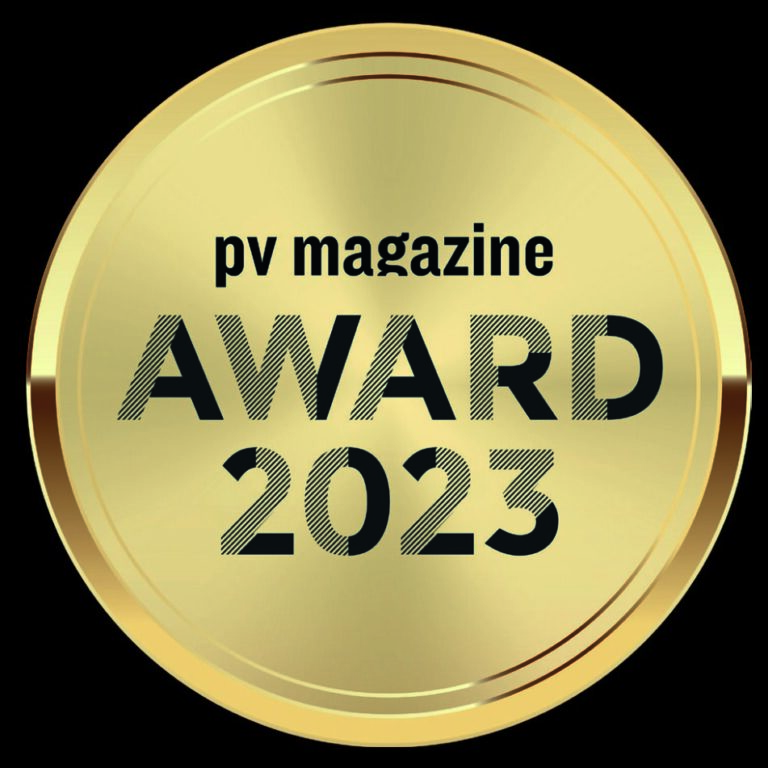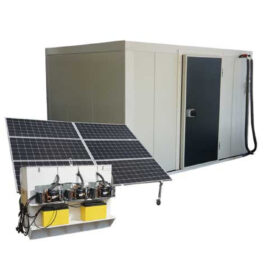Eight pv magazine The winners of the 2023 Awards have been chosen, in a year marked by innovation at all levels, from module production to project development.
Despite falling module prices and high inventory levels in 2023, the industry has not focused solely on cutting costs and reducing losses. Instead, the resolute pursuit of high performance continued as solar and storage companies used technical innovation to differentiate themselves from the competition. The technological ambition was clearly visible across the board, including in the entries for the new Projects category. There were 59 innovative solar and storage projects entered and choosing a winner was no easy task.
A total of 19 independent expert judges deliberated on this year’s entries, bringing a wealth of experience and expertise to the process. The editors of pv magazine would like to thank everyone for the time they spent on the selection process.
In response to the 2023 participants: pv magazine Editor-in-Chief Jonathan Gifford said the innovations on display represent real solutions to the major challenges facing the solar and storage industries. “Solar and energy storage companies continue to demonstrate truly extraordinary levels of innovation and roll out new products and services that address key challenges in cost, performance and flexibility. The ever-increasing number of entrants across the eight award categories also speaks to the breadth and scale of the creativity and technical prowess inherent in our industries.”
And the winners are…
Modules
Winner: Risen Energy, Hyper-ion
An output power of over 700W is a remarkable achievement for any solar panel, but the 2023 Modules winner has a lot of innovation to set it apart. In addition to its heterojunction (HJT) cell, Hyper-ion uses Risen’s own proprietary version of busbarless (0BB) cell interconnection – under the Hyper-link brand, cell thickness of an industry-leading 90 to 100 micrometers, and the option to create a steel frame a module that really stands out.
The efficiency and power results are also remarkable. The module datasheet confirms that the Hyper-ion comes with a power range of 680-705 W, in dimensions of 2,384 mm x 1,303 mm, and a weight of 41 kg. Inside there are half-cut HJT cells of 210 mm.
In addition to performance, Risen has also extended its warranty, giving it an edge over TOPCon rivals. It offers a 15-year product warranty and a 30-year power warranty, guaranteeing 90.3% of rated power.
Projects
Winner: Solar Cooling Engineering, PV Cool Kenya
German company Solar Cooling Engineering (SCE) has taken an innovative approach to cooling with its PV Cool Kenya project. SCE has developed solar-powered cooling technology based on a sustainable refrigerant (R600a) and insulation materials.
Unlike cold rooms that rely on traditional, grid-tied cooling methods, the SelfChill system uses modular thermal storage to compensate for cooling peaks. Water is cooled and frozen and stored in a water cooler that supplies cold water to a fan coil unit in the cold room. In this way, energy fluctuations can be compensated by energy stored in the form of ice.
Battery storage can be added if necessary, but this is not a necessary part of the system. The cooling unit itself has been designed in-house, with SCE choosing to create a DC unit powered by PV modules.
 Inverters
Inverters
Winner: Deye Technologies SUN-29.9-50K-SG01HP3
This year’s winner is Deye Technologies SUN-29.9-50K-SG01HP3 – a hybrid inverter for the C&I market. It is available in power classes from 29 kW to 50 kW and is very suitable for retrofitting. The inverter’s 400 AC output fits older installations, making it a good candidate for updating PV installations.
Category judge Cormac Gilligan, director of clean energy technology at S&P Global, said there is a growing market in Europe for updating and adapting solar energy systems with the addition of battery systems to increase self-consumption. He found the flexibility of the Deye inverter striking. For example, it can be cascaded into a 500 kW application and operate completely off-grid. The ability to connect a diesel generator and charge the batteries that way means that this inverter could meet demand in regions where weak electricity grids are prevalent.
 production
production
Winner: Origami Solar, roll-formed frame made of recycled steel
Origami Solar is rolling out production of its patent-pending steel frame design to contract manufacturers in the United States. The frames are expected to be available from the end of 2023.
Frames are manufactured from recycled steel in a continuous process that Origami Solar claims is 10 times faster than making aluminum frames, producing one frame every 15 seconds. It is also claimed that frames have demonstrated greater stiffness in testing, making modules better equipped to handle heavy loads from snow or wind. Further testing is underway with partners including the US National Renewable Energy Laboratory.
In terms of price, the company expects to be able to sell frames at least 5% lower than aluminum competitors. There is also a sustainability case to be made. Origami Solar has worked with consultants Boundless Impact to demonstrate a significantly lower carbon footprint per module.
 Sustainability
Sustainability
Winner: ArcelorMittal, XCarb and Magnelis
Multinational steelmaker ArcelorMittal claims its XCarb steel is both durable and durable. XCarb is a certified low-carbon material and the company reports that it is made primarily from scrap metal, with production carried out via an electric arc furnace using 100% renewable energy.
The steel producer’s Magnelis steel can also boast sustainability credentials. It has a long lifespan, making it suitable for solar installations in challenging environments. Magnelis steel is a double-sided hot-dip galvanized carbon steel, coated on both sides with a zinc-aluminum-magnesium alloy. “Anything you can do to make a solar energy system last longer has a positive impact on the climate,” said jury member Jenny Chase, solar energy analyst at BloombergNEF.
ArcelorMittal aims to achieve a CO2 reduction of 25%2 emission intensity per tonne of raw steel in 2030.
 BESS
BESS
Winner: Fluence, UltrastackTM
US storage specialist Fluence has developed a Storage-as-Transmission Asset (SATA) that can help network owners and operators manage the curtailment of renewable energy sources, increase the use of power lines and reduce congestion. UltrastackTM provides network owners and operators with fast response time of less than 150 milliseconds and system uptime of more than 99% to meet the availability requirements of critical infrastructure. The advanced control applications, some with patents pending, include synthetic inertia, power oscillation damping, grid-forming inertia, dynamic voltage regulation, backup power contribution and black start.
Unlike ‘regular’ large batteries, SATA projects are carried out to simulate transmission line currents by injecting and absorbing current. In such applications, they can be used to strengthen or even replace existing power lines, providing infrastructure planners with a new, versatile solution for the transmission transition.
 BUNCH
BUNCH
Winner: Atonometry, RDE300i
US-based Atonometrics is targeting utility-scale solar projects with its monitoring innovation, the RDE300i. The system performs in-situ measurements of current/voltage (IV) curves within a series of modules. This allows technicians to gain an immediate view of the performance of individual modules within an array, and eliminates the costs associated with installing and maintaining reference modules at a site.
The manufacturer is keen to point out that in-situ IV curve measurement could be useful in plant monitoring on many fronts, and that it is working with laboratories and industrial partners to develop new applications for the technology.
For now, the use case for RDE300i is focused on pollution monitoring. Here the system promises more accurate results than the usual approaches of reference modules or optical sensors – and it can also be integrated with these systems, so that monitoring teams have all the basic coverage.
 Publisher’s choice
Publisher’s choice
Winner: JinkoSolar
It is high time that we recognize leading module manufacturers in this category and this is not an easy task. There is a wealth of module makers with strong track records and impressive product portfolios.
In 2023, the nod will go to JinkoSolar, which has supplied more PV modules than any other manufacturer. In November 2023, JinkoSolar reached the historic milestone of 200 GW of modules shipped since the delivery of the first panels in 2010. The manufacturer quickly switched to n-type TOPCon and the higher efficiency it offers. In October 2023, the company announced a new n-type TOPCon cell efficiency record of 26.89% for a 182mm cell.
But JinkoSolar is much more than just a module manufacturer. It has expanded its product portfolio to include battery energy storage systems (BESS) to provide its customers around the world with a complete solution with both state-of-the-art modules and the latest BESS technology.
This content is copyrighted and may not be reused. If you would like to collaborate with us and reuse some of our content, please contact: editors@pv-magazine.com.



